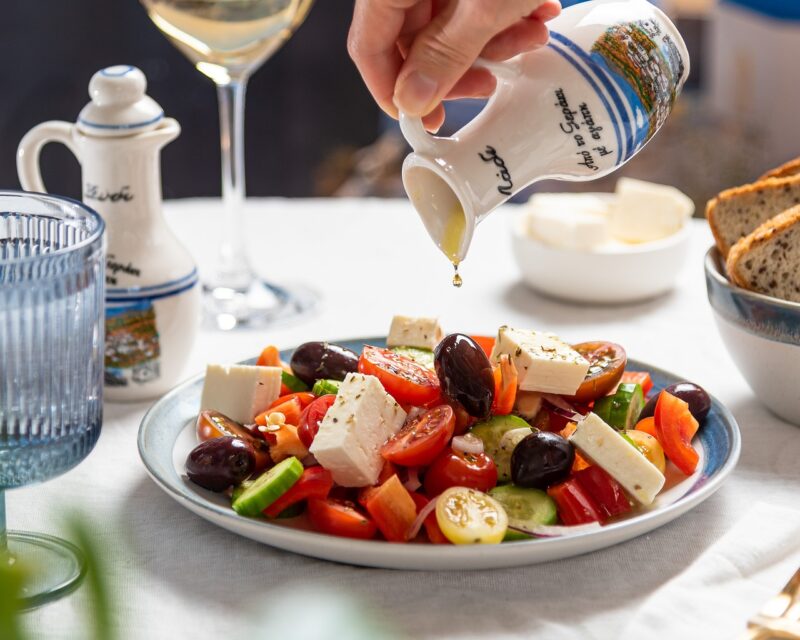
When it comes to salads, the dressing can make or break your meal. Store-bought dressings are often loaded with preservatives, sugars, and unhealthy fats that can detract from the health benefits of fresh vegetables. Making your own salad dressings not only allows you to control the ingredients but also opens the door to creative flavors that can elevate your salads. In this article, we’ll dive into various types of dressings you can make, the health benefits of homemade versions, and delicious recipes to inspire your culinary journey.
1. Why Homemade Salad Dressings?
Homemade salad dressings offer numerous advantages over store-bought varieties:
- Control Over Ingredients: You can choose fresh, high-quality ingredients and exclude unhealthy preservatives and additives.
- Flavor Customization: Adjust the flavors according to your personal preferences, whether you like it tangy, sweet, or spicy.
- Health Benefits: Create dressings that are lower in calories, sugar, and unhealthy fats while still being delicious.
- Cost-Effectiveness: Homemade dressings can be cheaper than buying gourmet varieties at the store.
By making your own dressings, you can turn a simple salad into a headline dish while ensuring it aligns with your dietary goals.
2. Basic Components of Salad Dressings
A foundational understanding of salad dressings begins with their primary components:
1. Oils: The base of most dressings is a good quality oil. Options include:
– Extra virgin olive oil
– Avocado oil
– Walnut oil
– Sesame oil
2. Acid: The zing factor is mainly derived from acids. Common choices are:
– Vinegars (balsamic, apple cider, red wine)
– Fresh citrus juice (lemon, lime, orange)
3. Emulsifiers: These help blend oil and acid for a smooth texture. Popular emulsifiers include:
– Dijon mustard
– Honey or agave syrup (for sweetness)
– Yogurt or ricotta cheese (for creaminess)
4. Seasonings: Don’t forget the spices! Salt, pepper, herbs, and spices can enhance flavors and elevate your homemade dressings.
Understanding these basic components will set the stage for a plethora of salad dressing combinations.
3. Flavorful Recipes for Homemade Salad Dressings
Here are several easy yet delicious recipes to get you started making your own salad dressings:
3.1 Classic Vinaigrette
Ingredients:
– 1/4 cup extra virgin olive oil
– 2 tablespoons balsamic vinegar
– 1 teaspoon Dijon mustard
– Salt and pepper to taste
Instructions:
1. In a bowl, whisk together the vinegar and mustard.
2. Gradually add the olive oil while whisking until the dressing emulsifies.
3. Season with salt and pepper to taste.
3.2 Creamy Avocado Dressing
Ingredients:
– 1 ripe avocado
– 1/2 cup Greek yogurt
– 1 tablespoon lemon juice
– Salt, pepper, and garlic powder to taste
Instructions:
1. In a blender or food processor, combine the avocado, Greek yogurt, and lemon juice.
2. Blend until smooth and creamy.
3. Season with salt, pepper, and garlic powder.
3.3 Honey Mustard Dressing
Ingredients:
– 1/4 cup Dijon mustard
– 1/4 cup honey
– 1/2 cup apple cider vinegar
– 1/2 cup olive oil
Instructions:
1. In a small bowl, whisk together the mustard, honey, and vinegar.
2. Slowly drizzle in the olive oil while whisking until fully incorporated.
3. Store in the refrigerator for up to a week.
3.4 Spicy Cilantro Lime Dressing
Ingredients:
– 1 cup fresh cilantro
– 1/2 cup Greek yogurt
– Juice of 2 limes
– 1 teaspoon garlic powder
– Salt and pepper to taste
Instructions:
1. Combine all ingredients in a blender and blend until smooth.
2. Adjust seasoning as desired and enjoy!
4. Tips for Storing Homemade Dressings
– Refrigeration: Store homemade dressings in an airtight container in the fridge to maintain their freshness. Most dressings can last up to a week or more.
– Separation: Natural dressings may separate, so give them a good shake or stir before using.
– Taste Test: Always taste your dressing before serving; you can easily adjust the flavors by adding more acid, sweetener, or seasoning as needed.
5. Exploring Flavor Combinations
Once you master the basics, feel free to experiment with other flavor combinations:
– Add herbs like basil, thyme, or dill for freshness.
– Experiment with fruits such as berries, peaches, or even ginger.
– Use different types of vinegar (e.g., rice vinegar, champagne vinegar) to create varied flavor profiles.
The sky is the limit when creating your unique salad dressings!
Conclusion
Making your own salad dressings is easy, fun, and rewarding. By using fresh ingredients and tailoring the flavors to your liking, you can elevate any salad into something extraordinary. Not only will homemade dressings be healthier, but the versatility will keep you excited about your meals.
So gather your ingredients, get your whisk or blender ready, and embark on the adventure of creating flavorful, healthier salad dressings at home. Your salads deserve it!







